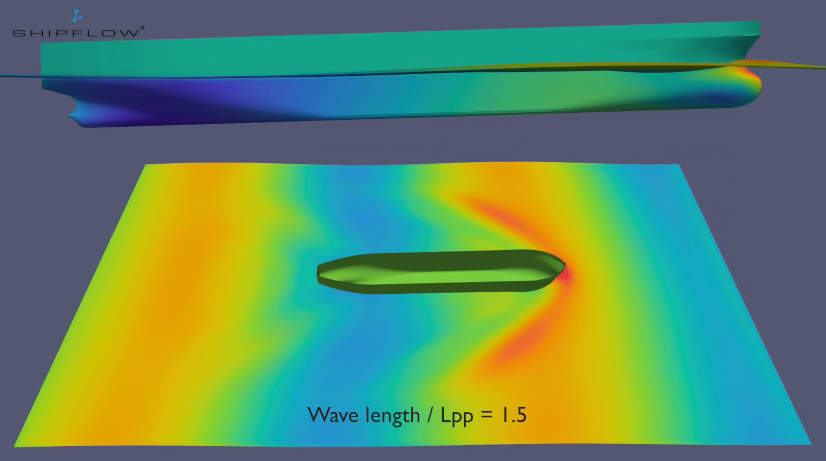 SHIPFLOW 6.1
SHIPFLOW 6.1
The two major news are:
- Improved performance of SHIPFLOW MOTIONS by 5-10 times and less memory requirements.
- Automatic treatment of the transom condition in MOTIONS.
- The grids are automatically adjusted for full scale Reynold numbers.
MOTIONS
- Computational time has been drastically reduced. A typical computation with a fine grid is now 5-10 times faster. The big improvement in computational time has been achieved by grouping panels far away from a panel and thereby making the computational time scale better when the number of panels increase. Keywords BTHETA and FTHETA controls the level of the grouping and recommend values for both are 0.2. • The memory requirement is much less compared to earlier releases
- Free surface panelization is changed to automatically handle both wet and dry transoms. A symmetric computation now always has two panel groups on the free surface; one covering the free surface upstream of the hull and along the hull and one covering the free surface downstream of the hull. An unsymmetric computation has three panel groups on the free surface; one covering the free surface upstream and along the hull on the star-board side, one on the port side and one covering the entire domain downstream of the hull. SHIPFLOW MOTIONS also uses empirical formulas to predict if the transom is wet or dry. This means that SHIPFLOW users will not have to specify anything regarding the transom flow.
- Many improvements are included that make computations more robust.
- The automatic report now produces a time averaged wave pattern for a computation in waves.
- The automatic FFT post-processing has been reworked and should now be much better
RANS solver XCHAP
- 50% more cells are added to full scale XGRID grids in the normal direction for default VCOARSE, COARSE, MEDIUM and FINE grids.
- Computations of overlap informations has been threaded to reduce the computational time for computations with many grids.
